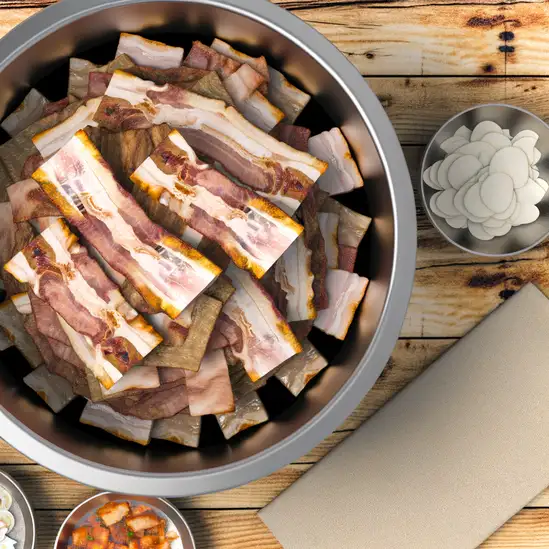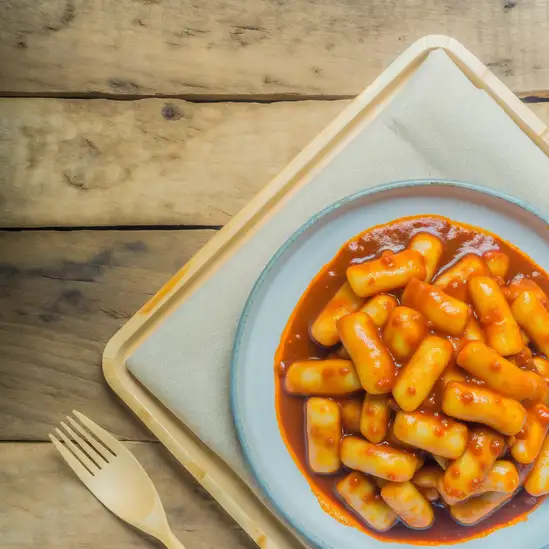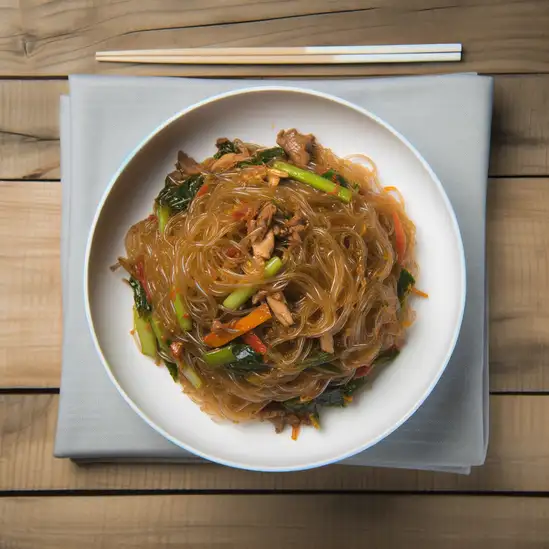


Seoul feels like a city that’s constantly humming with life,where ancient traditions and cutting-edge modernity dance side by side. Imagine wandering through narrow alleys lined with hanok houses,their wooden beams glowing softly in the afternoon sun,then stepping out into bustling streets filled with neon signs and the irresistible aroma of sizzling street food. The city’s energy is contagious—there’s a rhythm to it,from the chatter of locals bargaining at markets to the steady beat of K-pop spilling out of cafes. What really sticks with you is how Seoul engages all your senses. You’ll hear the clatter of chopsticks and laughter at a late-night pojangmacha (street food tent),smell the sweet,smoky scent of grilled meat mingling with spicy kimchi,and feel the crisp breeze along the Han River as joggers and families enjoy the parks. The city’s layers reveal themselves slowly—ancient palaces tucked between skyscrapers,tranquil temples offering quiet moments amid the urban rush. Seoul’s character is a blend of warmth and innovation. People are friendly and proud of their culture,eager to share stories over a cup of rich,bitter coffee or a bowl of comforting bibimbap. Whether you’re exploring art galleries in trendy neighborhoods like Hongdae or soaking in the panoramic views from Namsan Tower,there’s a genuine pulse here that invites you to dive deeper,to taste,listen,and truly feel the city’s soul.
The information on this page is currently being reviewed by Tripkliq and should be used as a guide only
Eng word: Hello
Eng pronunciation: annyeonghaseyo
Local language: 안녕하세요
Eng word: Goodbye
Eng pronunciation: annyeonghi gaseyo
Local language: 안녕히 가세요
Eng word: Thank you
Eng pronunciation: gamsahamnida
Local language: 감사합니다
Eng word: How much
Eng pronunciation: eolmayeyo
Local language: 얼마예요
Eng word: Toilet
Eng pronunciation: hwajangsil
Local language: 화장실
Eng word: Help me
Eng pronunciation: dowajuseyo
Local language: 도와주세요
Eng word: Yes
Eng pronunciation: ne
Local language: 네
Eng word: No
Eng pronunciation: aniyo
Local language: 아니요
Eng word: Excuse me
Eng pronunciation: sillyehamnida
Local language: 실례합니다
Seoul, originally known as Wiryeseong, was founded in 18 BC by the Baekje Kingdom, one of the Three Kingdoms of Korea.
In 1394, Seoul became the capital of the Joseon Dynasty, a role it has maintained for over 600 years, reflecting its longstanding centrality to Korean culture and history.
Constructed in 1395, Gyeongbokgung Palace was the main royal palace of the Joseon dynasty, showcasing exquisite architecture and serving as a symbol of national pride.
During the Joseon Dynasty, Seoul was known as Hanyang. It was later known as Hanseong before adopting its current name in 1945.
The Incheon Landing during the Korean War in 1950 is a significant event in Seoul's history, marking a turning point that led to the recapture of Seoul from North Korean forces.
Seoul proudly hosted the Summer Olympics in 1988, a momentous event that showcased South Korea's culture, technological advancement, and hospitality on the global stage.
Constructed in 1396, the Seoul City Wall, also known as the Hanyangdoseong, was built to protect the city from invaders and wildlife, parts of which still stand today as a historical monument.
The Cheonggyecheon Stream, once hidden under concrete since the post-Korean War development, was restored and reopened in 2005 as a public recreation space in the heart of Seoul.
In the latter half of the 20th century, Seoul transformed from the ruins of the Korean War into one of the world's leading economic and technology hubs.
In Seoul, the most common Power Adaptor is Type C, Type F.



A popular Korean dish that consists of mixed rice with vegetables, meat, and a spicy sauce. It is often served in a hot stone bowl.

A staple in Korean cuisine, kimchi is a fermented vegetable dish, usually made with cabbage and radishes, that is spicy and tangy in flavor.

A popular Korean barbecue dish that consists of thick slices of pork belly grilled at the table and served with various side dishes.

A popular street food in Korea, tteokbokki is a dish made with chewy rice cakes cooked in a spicy sauce.

A Korean dish made with glass noodles stir-fried with vegetables, meat, and a sweet and savory sauce.
Imagine stepping into a place where the ocean breeze carries the scent of salty waves and blooming camellias,and the landscape feels like a living painting. That’s Jeju-si for you—a city that hums with a laid-back energy,yet pulses with stories rooted deep in volcanic soil. Walking through its streets,you’ll notice the soft crunch of volcanic rock underfoot and the gentle chatter of locals who wear their island pride like a warm shawl. It’s a place where nature and culture blend seamlessly,from the rugged cliffs that plunge into turquoise waters to the quaint markets bursting with fresh seafood and sweet tangerines.
Jeju-si’s charm lies in its contrasts. You can start your day wandering through the vibrant Dongmun Market,tasting freshly grilled abalone or chewy hallabong oranges,then lose yourself in the serene beauty of the nearby Olle Trails,where the wind whispers through pine forests and the distant call of seabirds accompanies your steps. The city’s unique heritage,shaped by its island isolation,is visible in the traditional stone houses and the heartfelt stories of haenyeo—female divers who harvest the sea’s bounty with incredible skill and bravery.
What really stays with you is the city’s rhythm:unhurried yet alive,peaceful yet full of surprises. Whether you’re sipping a cup of locally brewed green tea while watching the sun dip behind Hallasan Mountain or chatting with a friendly vendor about the best hidden spots,Jeju-si invites you to slow down,breathe deeply,and soak in a world that feels both timeless and refreshingly new.
If you’ve never been to Busan,imagine a city where the ocean breeze carries the scent of salty waves mixed with sizzling street food,and the skyline is a lively patchwork of modern skyscrapers and colorful fishing boats bobbing in the harbor. That’s Busan — a place that feels both vibrant and laid-back at the same time. Walking along Haeundae Beach,you’ll hear the laughter of families and the distant hum of live music from nearby cafes,while the sun warms your skin and the cool sea spray refreshes you. It’s a city that pulses with life but never rushes you.
What really makes Busan stand out is its blend of urban energy and natural beauty. You can start your day exploring the bustling Jagalchi Fish Market,where vendors shout out their freshest catches and the air is thick with the aroma of grilled seafood. Later,wander through Gamcheon Culture Village,a maze of brightly painted houses and quirky art installations that feel like stepping into a living canvas. The city’s character is deeply tied to the sea,and you can taste that in every bite of spicy,tangy kimchi jjigae or fresh hoe (Korean sashimi) served with a side of soju.
Busan’s warmth isn’t just in its weather but in its people — friendly,welcoming,and proud of their city’s unique charm. Whether you’re hiking up to the peaceful Haedong Yonggungsa Temple perched on the cliffs or catching a film at the famous Busan International Film Festival,you’ll find moments that surprise and delight. It’s a city that invites you to slow down,breathe in the salty air,and soak up a culture that’s as rich and layered as the waves rolling onto its shores.
Imagine stepping into a place where ancient history gently hums beneath your feet and the air carries whispers of old kingdoms. That’s Gyeongju for you—a city that feels like a living museum,but without the stiff,quiet vibe. Instead,it’s alive with the rustle of leaves in sprawling parks dotted with centuries-old tombs,the soft clink of temple bells,and the warm chatter of locals sharing stories over steaming bowls of ssambap (rice wrapped in fresh greens). Walking through Gyeongju,you’re surrounded by a tapestry of golden autumn leaves or cherry blossoms in spring,framing stone pagodas and serene lotus ponds that invite you to pause and breathe it all in.
The city’s charm lies in its seamless blend of past and present. You can wander through the sprawling Bulguksa Temple,feeling the cool stone under your fingertips,then stroll into a cozy café where the scent of freshly brewed green tea mingles with the sweet aroma of traditional rice cakes. At night,the softly lit Anapji Pond mirrors the stars,creating a magical scene that feels both timeless and intimate.
What really stays with you is Gyeongju’s gentle rhythm—unhurried,thoughtful,and deeply connected to its roots. It’s a place where history isn’t just something you read about but something you experience with all your senses. If you want to feel like you’ve stepped into a storybook,with every corner offering a new chapter,Gyeongju is waiting to welcome you.
Okinawa feels like stepping into a different rhythm of life—laid-back yet vibrant,where the ocean breeze carries a salty sweetness and the hum of cicadas blends with distant laughter. The island’s turquoise waters stretch endlessly,inviting you to dive into coral reefs teeming with colorful fish or simply sink your toes into soft,white sand. As you wander through the streets,the scent of sizzling Okinawan pork and sweet purple sweet potatoes wafts from local eateries,tempting you to try dishes that are both comforting and delightfully unfamiliar.
What really sets Okinawa apart is its unique blend of cultures. You’ll notice the Ryukyu influence in the architecture,the traditional music played on sanshin instruments,and the warm smiles of locals who seem genuinely proud of their heritage. It’s a place where ancient traditions coexist with a relaxed island vibe,creating a welcoming atmosphere that feels both timeless and refreshingly alive.
Beyond the beaches,there’s a quiet magic in the island’s lush forests and historic sites,like Shuri Castle,where you can almost hear whispers of the past. Whether you’re savoring a cup of jasmine tea in a cozy café or watching the sun dip below the horizon,Okinawa invites you to slow down,breathe deeply,and soak in a culture that celebrates life’s simple,beautiful moments.
Imagine stepping into a city where the buzz of scooters blends with the inviting aroma of street food sizzling on every corner—that’s Taipei for you. It’s a place where ancient temples nestle beside gleaming skyscrapers,and night markets pulse with life long after the sun dips below the horizon. Walking through Taipei,you feel this vibrant energy that’s both electric and warmly familiar,like a city that’s constantly awake but never rushed.
The streets are alive with colors and sounds:vendors calling out their specials,the clatter of mahjong tiles in cozy tea houses,and the sweet scent of bubble tea mingling with the earthy fragrance of freshly steamed dumplings. Taipei’s culture is a beautiful blend of tradition and modernity,where you can explore centuries-old heritage at Longshan Temple,then hop on a high-speed train to the top of Taipei 101 for a jaw-dropping cityscape view.
What really sticks with you is the genuine kindness of the people—locals who are eager to share their favorite night market stalls or recommend a quiet café tucked away in a leafy alley. Whether you’re savoring a bowl of beef noodle soup or wandering through the lush trails of Elephant Mountain,Taipei feels like a city that invites you to slow down,explore deeply,and savor every moment.
Bangkok is one of those cities that grabs you the moment you step out into its bustling streets. There’s this electric energy in the air—a mix of honking tuk-tuks,sizzling street food stalls,and the chatter of locals weaving through markets. The city feels alive,like it’s constantly moving and breathing,yet somehow it balances this chaos with moments of serene beauty,like the golden spires of temples catching the afternoon sun or quiet canals reflecting the sky.
Walking through Bangkok,you’ll be hit by a whirlwind of scents:fragrant jasmine from flower vendors,the sharp tang of lemongrass and chili from street carts,and the sweet aroma of mango sticky rice tempting you at every corner. The colors are just as vivid—neon signs flicker alongside traditional wooden shophouses,and monks in saffron robes glide past modern skyscrapers. It’s a city where old and new dance together effortlessly.
What really makes Bangkok special is its warmth and openness. The people here have a genuine kindness that shines through,whether you’re bargaining at Chatuchak Market or sharing a laugh over a bowl of spicy boat noodles. The culture is rich and layered,from the intricate rituals at Wat Pho to the lively festivals that light up the streets. Visiting Bangkok feels like stepping into a story that’s still unfolding,full of surprises and moments that stay with you long after you leave.
Fake listings for apartments or hotels may be posted online, requiring a deposit that is never returned.
Tourists may be invited to bars or clubs and then presented with an exorbitant bill, sometimes under threat.
Unlicensed money changers may offer poor exchange rates or give counterfeit currency.
Individuals dressed as monks may approach tourists for donations, but they are not genuine monks.
Scammers posing as travel agents offer fake tours or services, taking payment upfront and then disappearing.
Crowded tourist areas can be hotspots for pickpockets who target distracted tourists.
Vendors may sell counterfeit goods or charge tourists significantly higher prices than locals.
Some taxi drivers may take longer routes or not use the meter to overcharge tourists.
South Korea has very strict drug laws. The possession, use, or trafficking of illegal drugs is severely punished, with penalties including heavy fines and long prison sentences. This applies to all drugs, including marijuana, which is illegal in South Korea. Tourists should avoid any involvement with illegal drugs to avoid severe legal consequences.
In Seoul, smoking is heavily regulated. Smoking is prohibited in public places such as parks, bus stops, and within a certain distance from schools and hospitals. Designated smoking areas are available, and violators can face fines. Tourists should look for designated smoking zones and be mindful of 'No Smoking' signs.
Vaping is subject to similar regulations as smoking in Seoul. It is prohibited in non-smoking areas, including public places and public transportation. Designated vaping areas are available, and violators can face fines. Tourists should use vaping devices only in designated areas and be aware of local regulations.
What are other people saying about Seoul?
Recent Social posts about Seoul
There is nothing to show you for now.